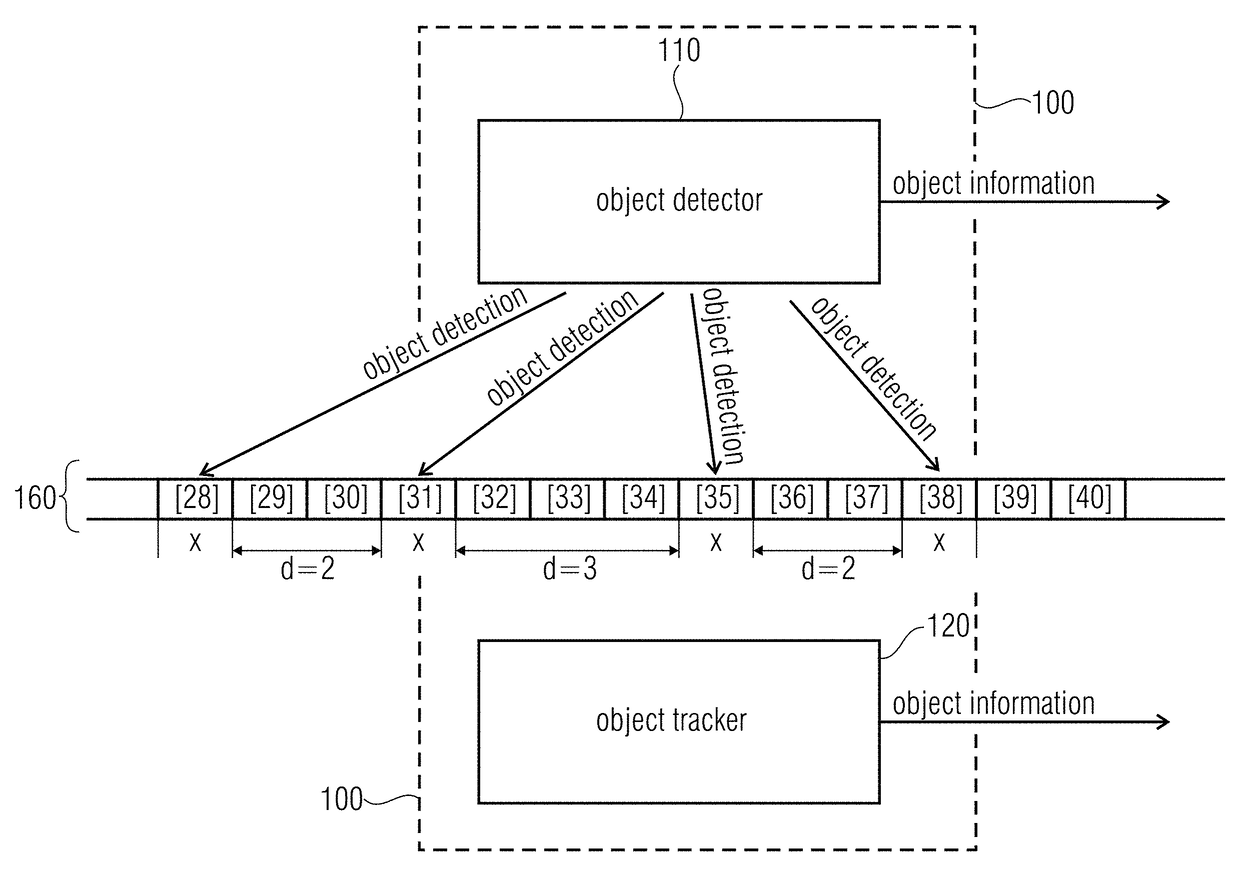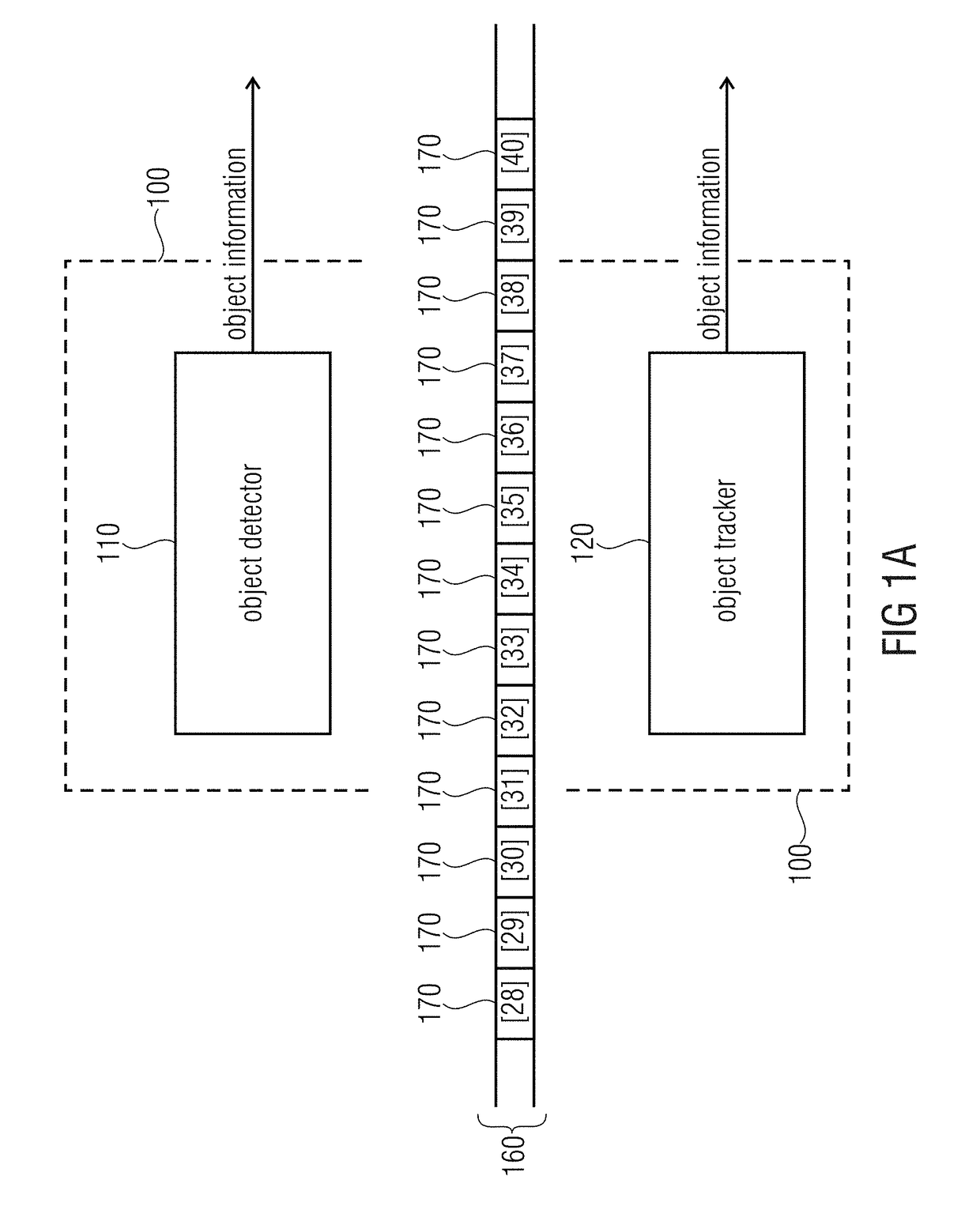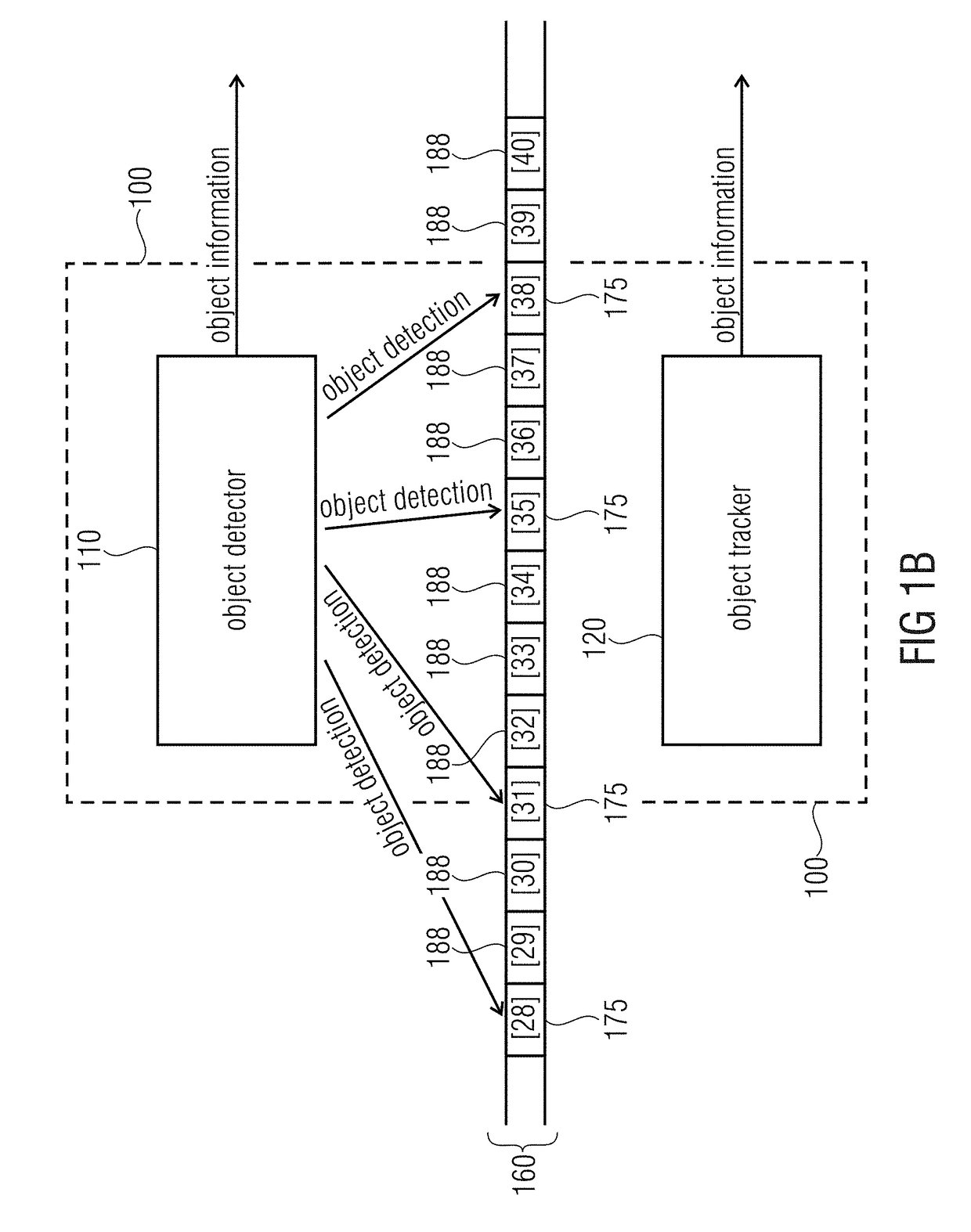Apparatus and method for resource-adaptive object detection and tracking
a technology for object detection and tracking, applied in image analysis, image enhancement, instruments, etc., can solve the problems of low processing power, system inability to afford all these requirements simultaneously on hardware with low processing power, high resolution image or complex object detection task, etc., and achieve the effect of efficient parallelization
- Summary
- Abstract
- Description
- Claims
- Application Information
AI Technical Summary
Benefits of technology
Problems solved by technology
Method used
Image
Examples
Embodiment Construction
[0042]FIG. 1a illustrates an apparatus 100 for providing object information based on an image sequence 160 comprising a plurality of images 170 according to an embodiment.
[0043]The apparatus of FIG. 1a comprises an object detector 110 and an object tracker 120.
[0044]FIG. 1a also illustrates the image sequence 160. The image sequence 160 comprises a plurality of images 170. It is an inherent property of every sequence that the members of the sequence are ordered within the sequence. Likewise, the images 170 of the image sequence illustrated by FIG. 1a are ordered within the image sequence 160. In FIG. 1a, the images 170 of the image sequence 160 are already illustrated in order. In particular, FIG. 1a illustrates in square brackets an assumed position of each of the images 170 within the image sequence. For example, in FIG. 1a, the first depicted image 170 is the 28th image of the image sequence 160, the second depicted image 170 is the 29th image of the image sequence 160, the third...
PUM
 Login to View More
Login to View More Abstract
Description
Claims
Application Information
 Login to View More
Login to View More - R&D
- Intellectual Property
- Life Sciences
- Materials
- Tech Scout
- Unparalleled Data Quality
- Higher Quality Content
- 60% Fewer Hallucinations
Browse by: Latest US Patents, China's latest patents, Technical Efficacy Thesaurus, Application Domain, Technology Topic, Popular Technical Reports.
© 2025 PatSnap. All rights reserved.Legal|Privacy policy|Modern Slavery Act Transparency Statement|Sitemap|About US| Contact US: help@patsnap.com



